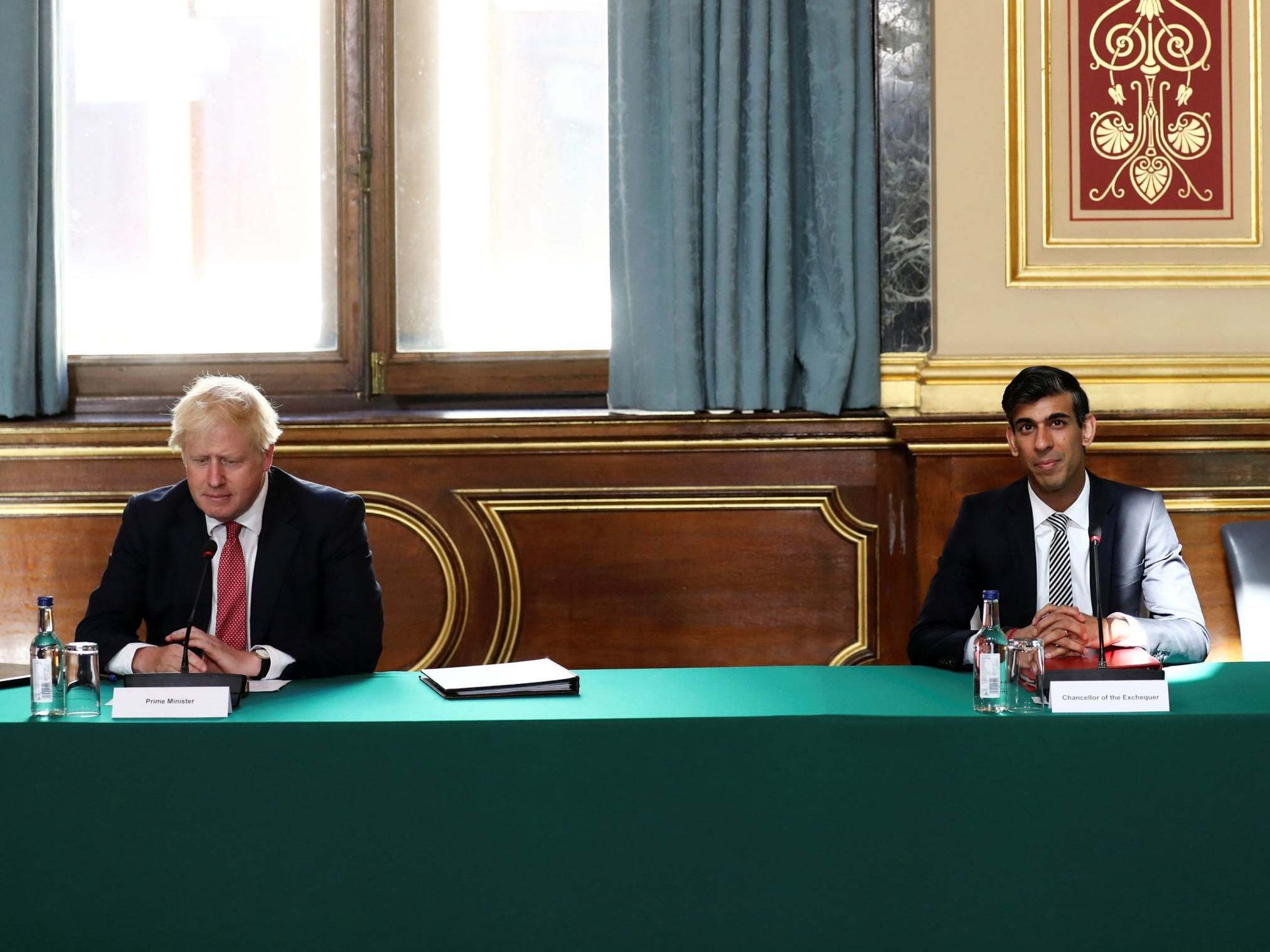Johnson and Sunak are the latest combatants in the long history of tension between PMs and chancellors
The prime minister failed to turn up for the chancellor’s economic statement this week, sparking rumours of a rift. But, as John Rentoul points out, disharmony between No 10 and No 11 is nothing new


William Gladstone solved the problem by taking the office of chancellor of the exchequer as well as that of prime minister. Stanley Baldwin also briefly served in both offices for three months in 1923. Since then, the tension between Nos 10 and 11 Downing Street has been a permanent feature of the British constitution.
Peter Thorneycroft, who was chancellor for the first year of Harold Macmillan’s government, resigned in 1958 along with his junior ministers Enoch Powell and Nigel Birch, because Macmillan insisted on increasing public spending.
That conflict, between a prime minister wanting to spend public money in pursuit of votes and a chancellor wanting to save it in an attempt to balance the books, has run like a crack in the wall between the nextdoor houses. It happened again in 1962 when Thorneycroft’s successor, Selwyn Lloyd, resisted Macmillan’s attempt to bribe Tory voters to stop them defecting to the Liberals, and he was replaced by Reginald Maudling.
Harold Wilson tried to limit the Treasury’s power (and to quarantine his unruly deputy, George Brown) by creating a Department of Economic Affairs, but it didn’t work.
Margaret Thatcher was an unusual prime minister, in that she was just as hawkish about public spending as the Treasury. Thus she had a harmonious working relationship with her first chancellor, Geoffrey Howe, although not such a good personal one. When she replaced him with Nigel Lawson, the faultline reopened but on a different issue, that of Britain’s alignment with the emerging European monetary union.
Lawson’s resignation in 1989 primed the explosive charges for Thatcher’s fall the following year – although the immediate cause of her departure was her refusal to abandon the vote-losing poll tax.
John Major fell out with Norman Lamont after the humiliation of the devaluation of the pound in 1992, and Tony Blair had already fallen out with Gordon Brown before Labour came to office. Their rift was more personal than political, in that Brown wanted Blair’s job. That resulted in another reversal of the usual polarity, in that, by the end of Blair’s time in No 10, Brown, as prime-minister-presumptive, was keen to maintain public spending, while Blair ineffectually demanded restraint.
They were also divided on Europe, although it may have suited Blair to pose in European capitals as an enthusiast for Britain adopting the euro, while his chancellor restrained him from such foolishness.
Brown then fell out with Alistair Darling on more traditional lines: Darling pressed Brown to acknowledge that public spending would have to be cut after the huge borrowing needed to save jobs after the financial crash.
David Cameron and George Osborne were one of the few examples of a friendship at the top that survived their six years in posts designed to drive them apart. There were tensions between them, but it helped that these could be earthed through the Liberal Democrat half of the coalition.
Theresa May and Philip Hammond restored the historical mutual disdain. She would have moved him after the 2017 election, but was so weakened that they were forced to continue their uncomfortable cohabitation.
Under Boris Johnson, Sajid Javid threatened to continue the traditional role of restrainer of prime ministerial ambitions – and Johnson’s rhetoric was certainly of ambitious spending on public services and vast building projects.
Now coronavirus has opened the faultline in a new direction. Rishi Sunak in his statement this week argued that, in the “awful trade-offs between health, education and employment”, more emphasis should be given to jobs – while the prime minister appears to be more concerned with measures to suppress the virus.
Much significance was read into Johnson’s absence from the House of Commons as Sunak outlined his “winter economic plan”, although it is possible that the prime minister is using his most popular colleague to try to push public opinion towards saving jobs as much as saving lives.
Subscribe to Independent Premium to bookmark this article
Want to bookmark your favourite articles and stories to read or reference later? Start your Independent Premium subscription today.
Join our commenting forum
Join thought-provoking conversations, follow other Independent readers and see their replies
Comments